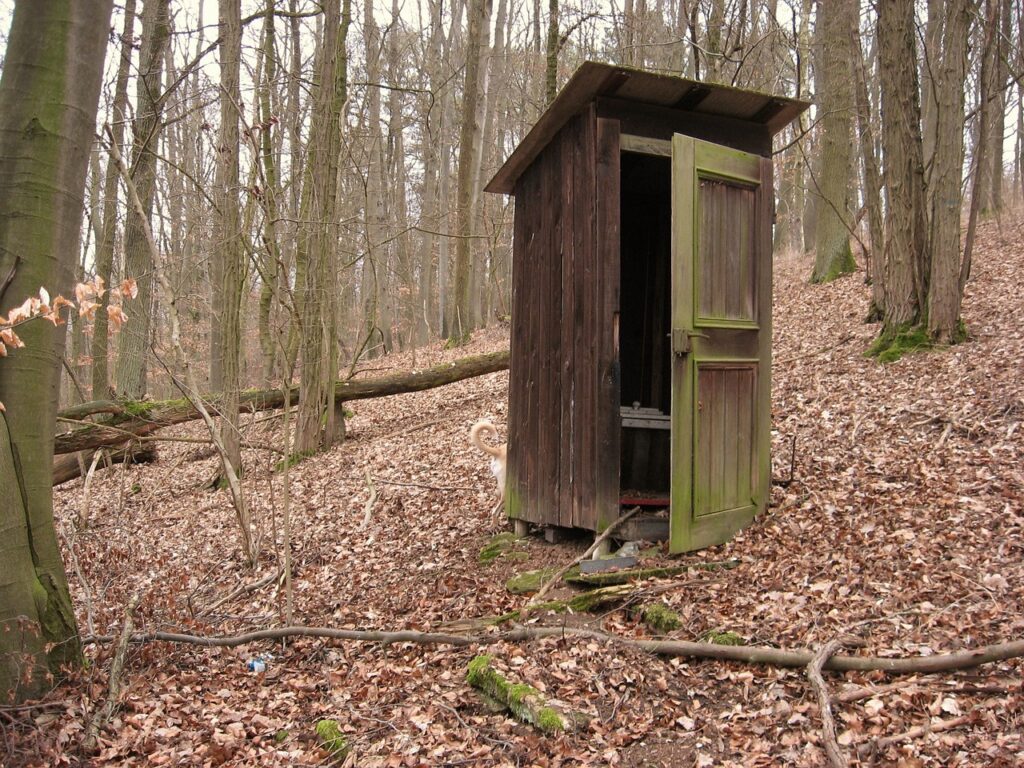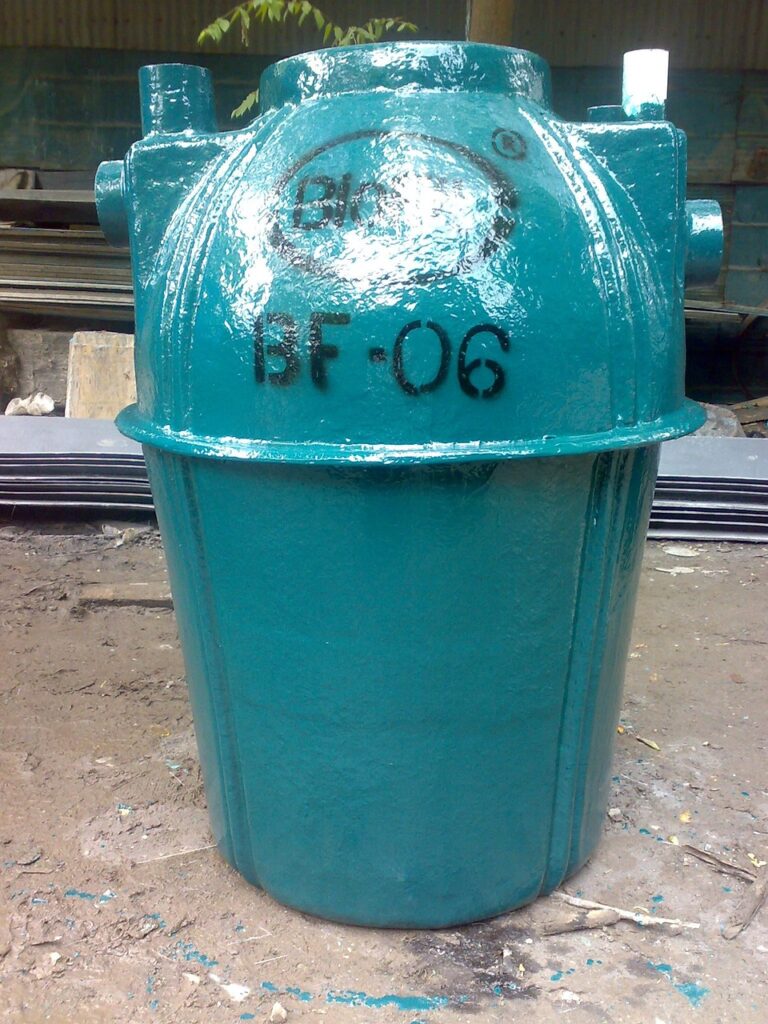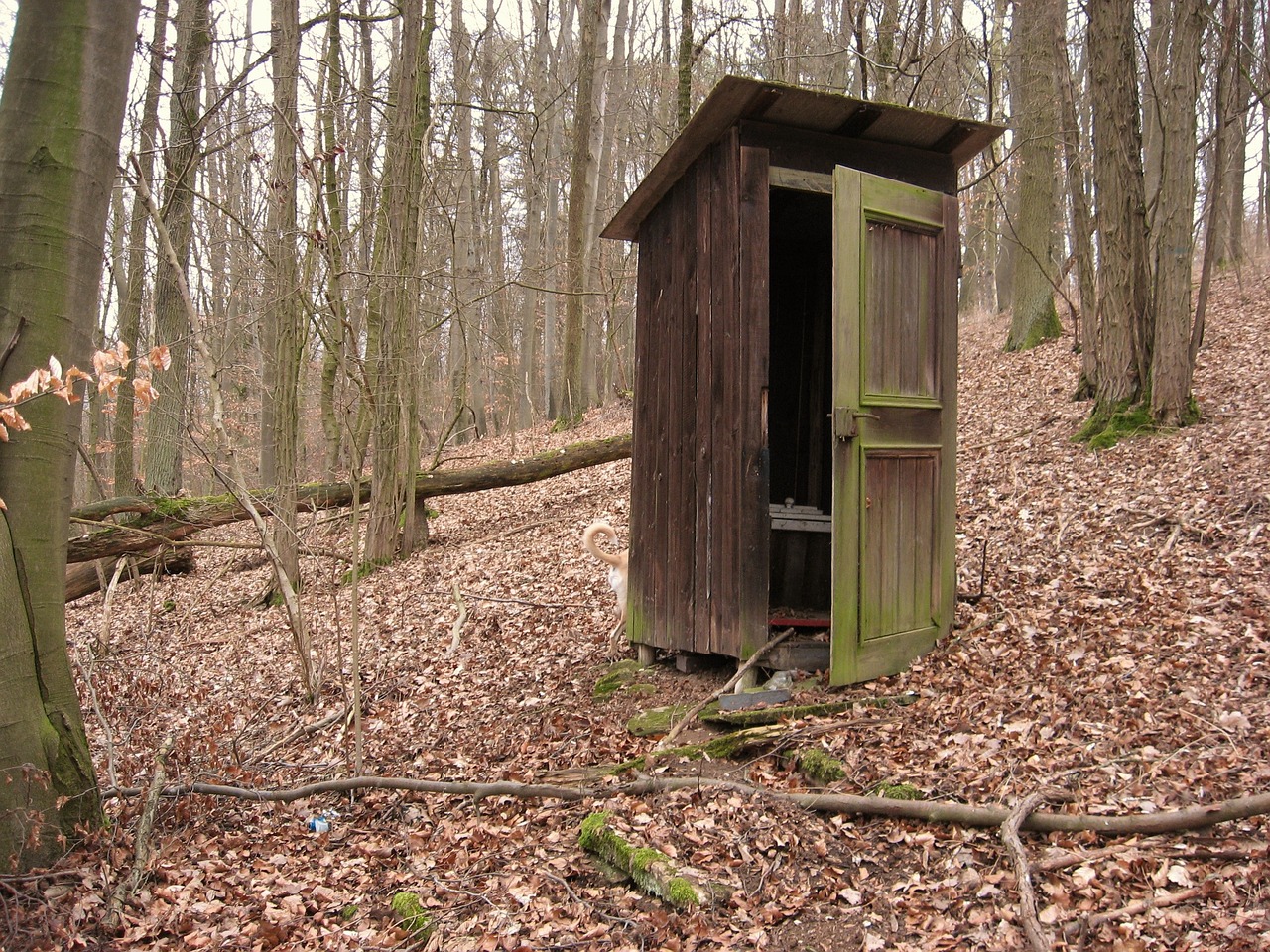Imagine having a hassle-free solution for your septic system needs – the dependable and efficient Septic Tank 500 Gallon. Designed to accommodate residential and small-scale commercial properties, this robust septic tank is the perfect answer to your waste management concerns. With its large 500-gallon capacity, it ensures that your waste is properly collected and stored, preventing any potential environmental hazards or expensive septic issues. Say goodbye to the stress of constantly emptying or maintaining your septic system, as the Septic Tank 500 Gallon has got you covered.

Understanding the Basics of a 500-Gallon Septic Tank
Septic tanks are an essential part of many residential and commercial properties, serving as an onsite wastewater treatment system. A 500-gallon septic tank is a common size used in smaller properties or those with lower wastewater flow rates. Understanding the basics of a 500-gallon septic tank can help you make informed decisions about installation, maintenance, and troubleshooting.
Definition and Purpose of Septic Tanks
A septic tank is a large container designed to hold and treat wastewater from households or businesses that are not connected to a public sewage system. It operates by allowing solids to settle at the bottom while the liquid portion, known as effluent, is discharged into a drainfield for further filtration and absorption by the soil. The purpose of a septic tank is to separate and decompose solid waste, preventing it from polluting the environment or causing health hazards.
Specific Features of a 500-Gallon Septic Tank
A 500-gallon septic tank is typically made of durable materials such as concrete, fiberglass, or plastic (polyethylene). It consists of several key components, including a inlet and outlet pipe, baffles or tees, and scum and sludge layers. These features work together to facilitate the proper functioning of the septic tank and ensure effective wastewater treatment.
Types of 500-Gallon Septic Tanks
When choosing a 500-gallon septic tank, you have several options to consider. Each type has its own advantages and considerations, so it is important to understand the differences to make an informed decision.
Concrete Septic Tanks
Concrete septic tanks are known for their durability and longevity. They are resilient to the effects of groundwater or soil movement and are less prone to cracking. Concrete tanks can be customized or precast to fit specific site requirements, and their weight provides stability against buoyancy. However, they may require additional reinforcement during installation due to their weight, and they can be susceptible to corrosion over time.
Fiberglass Septic Tanks
Fiberglass septic tanks are lightweight and easier to install compared to concrete tanks. They are non-corrosive and resistant to rust, allowing for a longer lifespan. Fiberglass tanks do not require additional reinforcement during installation and are less likely to crack under pressure or in freezing temperatures. However, they may be more expensive than concrete tanks, and their lightweight nature can make them susceptible to buoyancy in high groundwater areas.
Plastic or Polyethylene Septic Tanks
Plastic or polyethylene septic tanks are an affordable and lightweight option. They are resistant to corrosion, rust, and cracking, providing a longer lifespan. Polyethylene tanks are easy to install and require little maintenance. However, they may not be as robust as concrete or fiberglass tanks and may be susceptible to damage from external pressure or root intrusion.
Design and Structure of 500-Gallon Septic Tanks
Understanding the design and structure of a 500-gallon septic tank is crucial to ensure its optimal performance and longevity. Here are the key components and considerations related to its layout, inlet and outlet piping, baffles or tees, and scum and sludge layers.
General Layout
A 500-gallon septic tank is usually a rectangular or cylindrical container manufactured from concrete, fiberglass, or plastic. It is designed to be buried underground, with only the access covers visible. The location and depth of the tank should be determined during the site evaluation process, taking into account factors such as soil type, groundwater level, and local regulations.
Inlet and Outlet Piping
Inlet and outlet pipes are connected to the septic tank to allow the inflow and outflow of wastewater. The inlet pipe carries wastewater from the building’s plumbing system into the septic tank, while the outlet pipe allows treated effluent to be discharged into the drainfield. These pipes must be properly sized, positioned, and sealed to prevent leaks, clogs, or backups.
Baffles or Tees
Baffles or tees are internal dividers or barriers within the septic tank that help facilitate the separation and treatment of wastewater. They help prevent solids and scum from exiting the tank and entering the drainfield. Baffles improve the efficiency of the septic tank by ensuring a longer retention time for wastewater, allowing for better settling of solids and decomposition of organic matter.
Scum and Sludge Layers
Scum and sludge layers are natural byproducts of the wastewater treatment process that occur in the septic tank. Scum, consisting of oils, fats, and floating solids, forms on the liquid’s surface. Sludge, composed of heavier solids and organic matter, settles at the bottom of the tank. The presence of these layers indicates proper functioning and separation of solids within the tank.

Installation Process of a 500-Gallon Septic Tank
Proper installation of a 500-gallon septic tank is critical for its long-term performance and functionality. The installation process involves several steps, including site evaluation, excavation, tank placement, and back-filling.
Site Evaluation
The first step in installing a 500-gallon septic tank is to evaluate the site’s conditions. This includes assessing the soil type, permeability, and groundwater level. It also involves determining the required setback distances from buildings, wells, water bodies, or property lines according to local regulations. This evaluation helps determine the optimal location and depth for installing the septic tank.
Excavation
Once the site evaluation is complete, excavation begins. The area where the septic tank will be installed is carefully excavated, ensuring adequate space for the tank’s dimensions and access to the inlet and outlet pipes. The excavation should also consider the slope and contour of the land to facilitate proper wastewater flow and drainage.
Tank Placement
Once the excavation is complete, the septic tank is carefully placed in the prepared space. Proper alignment is essential to ensure the inlet and outlet pipes line up correctly with the plumbing system and drainfield, respectively. The tank should be level and securely positioned to prevent shifting or damage over time.
Back-filling the Tank
After the tank is in place, the excavation is back-filled using suitable material, such as soil or gravel, taking care not to damage the tank or its components. Proper back-filling is essential to provide stability to the septic tank, protect it from external forces, and allow for proper wastewater flow and distribution.
System Performance and Working of a 500-Gallon Septic Tank
Understanding how a 500-gallon septic tank performs and works can help you appreciate its role in treating wastewater effectively. The system relies on various processes, including wastewater inflow, biological decomposition, and effluent outflow.
Wastewater Inflow
Wastewater from a property’s plumbing system flows into the septic tank through the inlet pipe. This includes water from toilets, sinks, showers, and laundry, carrying organic matter, nutrients, and other contaminants. The septic tank acts as the initial treatment stage by allowing solids to settle, preventing their entry into the drainfield.
Biological Decomposition
Once inside the septic tank, the wastewater undergoes biological decomposition. Naturally occurring bacteria and enzymes in the tank break down the organic matter present in the wastewater, transforming it into gases, liquids, and solids. This decomposition process helps reduce the volume of solids and pollutants, making the effluent safer for further treatment.
Effluent Outflow
After the solid waste has settled and the biological decomposition process has occurred, the treated effluent flows out of the septic tank through the outlet pipe. This effluent is discharged into an underground drainfield or leach field, where further treatment and absorption into the soil occur. The drainfield’s design and construction are crucial to ensure effective filtration and prevent contamination of groundwater or nearby water bodies.
Maintaining a 500-Gallon Septic Tank
Regular maintenance of a 500-gallon septic tank is essential to ensure its optimal performance, prevent issues, and prolong its lifespan. Several key maintenance practices should be followed, including pumping frequency, proper water use, avoiding certain waste disposal, and regular inspections.
Needed Frequency for Pumping
Pumping the septic tank is a critical maintenance task that involves removing the accumulated scum and sludge layers. The frequency of pumping depends on various factors, including the tank size, household size, water usage, and the presence of a garbage disposal system. As a general guideline, a 500-gallon septic tank should be pumped every three to five years to prevent solids from overloading the system.
Proper Use of Water
Using water efficiently and responsibly is crucial for septic tank maintenance. Excessive water usage can overwhelm the system, leading to increased solid accumulation and decreased treatment efficiency. It is important to fix any leaks, avoid long showers, install water-saving fixtures, and spread out water-intensive activities throughout the day to prevent water overload in the septic tank.
Awareness of What Not to Discard in the System
Certain substances and materials should never be disposed of in a septic tank. These include non-biodegradable items like baby wipes, feminine hygiene products, cigarette butts, grease, oils, paints, and chemicals. These materials can clog the system, disrupt the bacteria’s natural decomposition process, or cause damage to the tank or drainfield. Proper waste disposal practices should be followed to prevent potential issues and maintain a healthy septic system.
Regular Inspections
Regular inspections of the septic tank and associated components are vital to identify any potential issues at an early stage. Inspections should be conducted by qualified professionals who can assess the tank’s condition, check for leaks or damage, examine the baffles and pipes, and ensure proper functioning of the system. Inspections should be carried out every one to three years or as recommended by a septic system professional.
Common Issues with 500-Gallon Septic Tanks
As with any wastewater treatment system, 500-gallon septic tanks can experience certain issues that may require attention and repairs. Some common problems include odor problems, backups, soil contamination, and incorrect installation. Being aware of these issues can help you identify potential problems and take appropriate action.
Odor Problems
Foul odors emanating from the septic tank or drainfield area can indicate system issues. These odors may be caused by gases such as hydrogen sulfide or methane, which are byproducts of the decomposition process. Odor problems can arise due to inadequate venting, leaks, improper waste disposal, or clogs in the system. Proper maintenance, inspections, and repairs can help resolve odor issues and restore a pleasant environment.
Backups
Backups occur when the septic tank is overloaded with solids or the drainfield becomes clogged, preventing effluent from flowing properly. Signs of backups may include slow-draining sinks, gurgling toilets, or sewage backups into the house. Backups can result from excessive water usage, lack of pumping, or damage to the baffles or pipes. Prompt action, such as pumping the tank or repairing the drainfield, is necessary to prevent further damage and restore proper system functioning.
Soil Contamination
Improperly treated effluent or leaks from a septic tank can lead to soil contamination. This can occur when the drainfield is too close to groundwater sources, or if the soil is not adequately permeable or unsuitable for treating effluent. Soil contamination can endanger human health and nearby water bodies, necessitating immediate remediation measures and potential relocation of the drainfield.
Incorrect Installation
Incorrect installation of a 500-gallon septic tank can result in various issues down the line. This can include misaligned pipes, inadequate depth, poor back-filling, or lack of proper stabilization. These installation errors can lead to leaks, system malfunctions, or even complete system failure. It is crucial to ensure that the septic tank installation is carried out by experienced professionals who adhere to local regulations and industry best practices.
Troubleshooting Problems with 500-Gallon Septic Tanks
When faced with problems related to a 500-gallon septic tank, a systematic troubleshooting approach can help identify the root cause and determine the appropriate repairs or solutions. Here are the key steps to follow when troubleshooting septic tank issues.
Identifying the Problem
The first step in troubleshooting is to identify the specific problem or symptom. This can involve observing any odors, backups, or abnormal behavior of fixtures connected to the septic system. Identifying the problem helps focus the troubleshooting efforts and prevents unnecessary repairs or replacements of components.
Determining the Cause
Once the problem is identified, the next step is to determine the underlying cause. This can involve inspecting the septic tank, drainfield, and associated components to look for visible signs of damage, leaks, or clogs. Understanding the cause can help inform the appropriate course of action and prevent future issues.
Possible Repairs and Solutions
Based on the identified problem and its cause, repairs or solutions can be determined. This may involve measures such as pumping the tank, repairing or replacing damaged pipes or baffles, clearing clogs, improving ventilation, or adjusting water usage habits. It is crucial to enlist the help of professionals, such as septic system service providers or plumbers, for complex repairs or installations to ensure proper and safe resolution of the issue.
Understanding the Regulations Surrounding a 500-Gallon Septic Tank
Proper adherence to regulations is essential when installing, maintaining, or repairing a 500-gallon septic tank. Various regulatory bodies set guidelines and standards to ensure the safe and effective operation of septic systems. Understanding these regulations is crucial to avoid legal issues, protect the environment, and safeguard public health.
Local and State Codes
Local and state codes provide detailed guidelines for the installation, operation, and maintenance of septic tanks within specific jurisdictions. These codes typically include requirements related to setback distances, tank sizing, drainfield design, water table considerations, and overall system performance. It is important to consult local health or environmental agencies to obtain the relevant codes and ensure compliance.
Federal Environmental Protection Agency (EPA) Regulations
The U.S. Environmental Protection Agency (EPA) sets federal regulations and guidelines related to septic systems. These regulations aim to protect the environment, prevent water contamination, and regulate system performance. The EPA provides resources and information on septic systems, wastewater management, and best practices for homeowners, installers, and service providers.
System Certification and Professional Requirement
In some regions, septic system installers and service providers may need certification or licensing to operate legally. Certification programs ensure that individuals have the necessary knowledge and skills to design, install, maintain, and repair septic systems. It is important to engage professionals who are certified or licensed to ensure the proper handling of your 500-gallon septic tank.
Choosing the Right 500-Gallon Septic Tank
When selecting a 500-gallon septic tank for your property, several factors should be considered to make an informed decision. These factors include costs, durability and sustainability, and relevant brands and retailers.
Costs
The cost of a 500-gallon septic tank can vary depending on the material, brand, and additional features. Concrete tanks are generally more affordable compared to fiberglass or plastic tanks. However, it is important to consider other costs associated with installation, maintenance, and potential repairs over the tank’s lifespan. Obtaining multiple quotes and comparing prices from reputable suppliers can help you find a suitable septic tank within your budget.
Durability and Sustainability
Durability and sustainability are key considerations when choosing a septic tank. Concrete tanks are known for their longevity and resistance to corrosion, but they can be susceptible to cracking. Fiberglass tanks offer a longer lifespan and are resistant to corrosion, while plastic tanks are lightweight and less likely to crack. Considering the soil conditions, climate, and expected usage can help determine the most appropriate material for your specific needs.
Relevant Brands and Retailers
Choosing a reputable brand and retailer is essential to ensure the quality and reliability of your 500-gallon septic tank. Researching brands known for their expertise, customer satisfaction, and adherence to industry standards can help you make an informed choice. Consulting with local septic system professionals or seeking recommendations from trusted sources can also provide valuable insights into reliable retailers and manufacturers in your area.
In conclusion, understanding the basics of a 500-gallon septic tank is crucial for homeowners and property owners who rely on these systems for wastewater treatment. By understanding the definition, purpose, types, design, installation process, system performance, maintenance, troubleshooting, regulations, and considerations when choosing a septic tank, you can ensure the proper functioning and longevity of your 500-gallon septic tank. Maintaining a well-maintained septic system is not only beneficial for your property but also contributes to the overall health and well-being of the environment.
